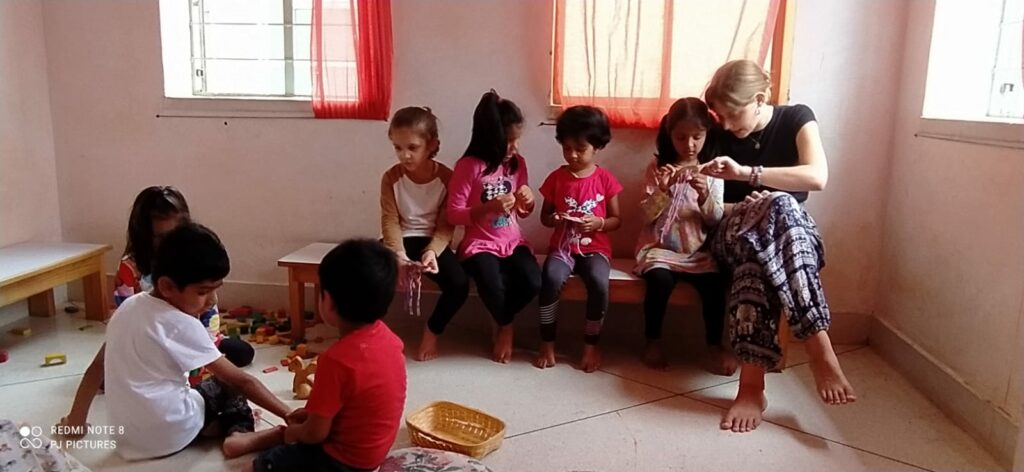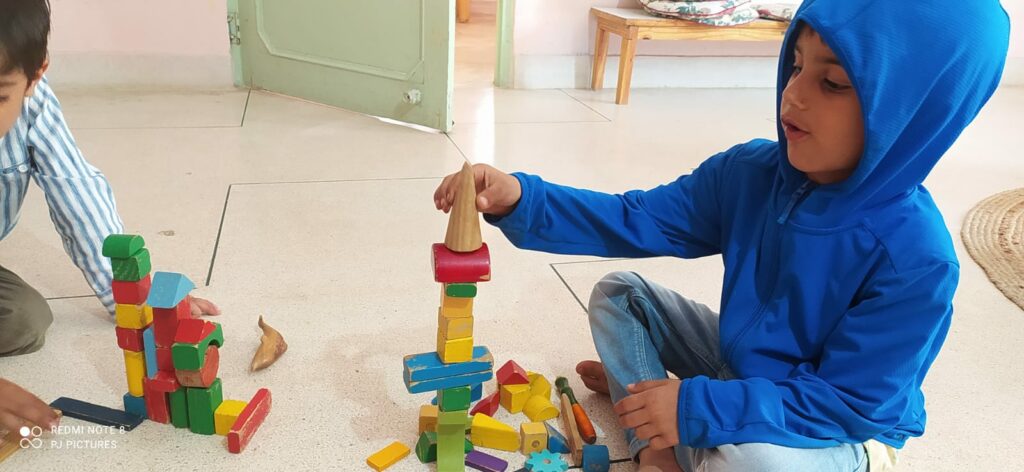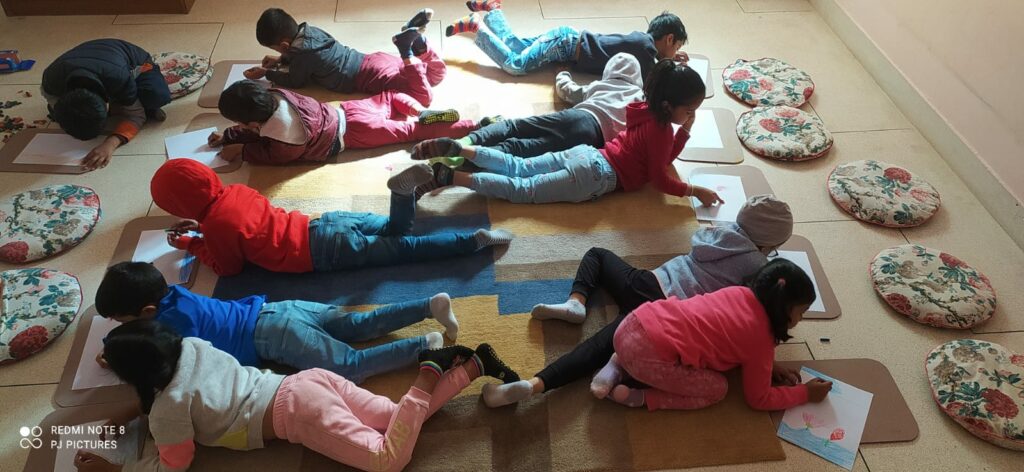INTRODUCTION
Uday’s Early-childhood (Kindergarten) programme is structured to provide a gradual transition from the life of the home to the structure of an elementary school. We consider childhood to be a valid and honorable experience, not a time to be rushed. We consciously build a strong foundation during these years by encouraging imaginative learning. A young child learns most deeply through imitation and engaging in meaningful activities such as painting, music, handcrafts, storytelling, nature walks and practical activities such as gardening and cooking. We help the child discover their world and prepare a solid basis for future intellectual work. Through their play, children learn basic life skills such as sharing with others, exploring possibilities, and even risk-taking and conflict resolution. Uday focuses on laying solid groundwork for communication skills, social emotional learning, conflict resolution, concentration, memory, retention, and a strong physical body which help children be ready for excellence in academics in later years. These skills guide the children to become free, creative thinkers and decision-makers for their upcoming lives.
Uday’s Early-childhood programme provides a happy and nurturing environment accommodating children from 2 to 6.5 years old. The programme is divided into two groups based on their needs. The first group is Level 0 which has children between the ages of 2 to 3.5 years old , and the second group is mixed-age kindergarten comprising Level 1, 2, 3 which has children between the ages of 3.5 to 6.5 years old.
A DAY AT UDAY’S KINDERGARTEN
ARRIVAL
The teachers start their day with meditation as their preparation to welcome the children. The children are warmly greeted by their teachers, as they arrive. Children keep their bags and contribute the fruits they get to the common basket. Then, they start their day with meeting and greeting their friends.
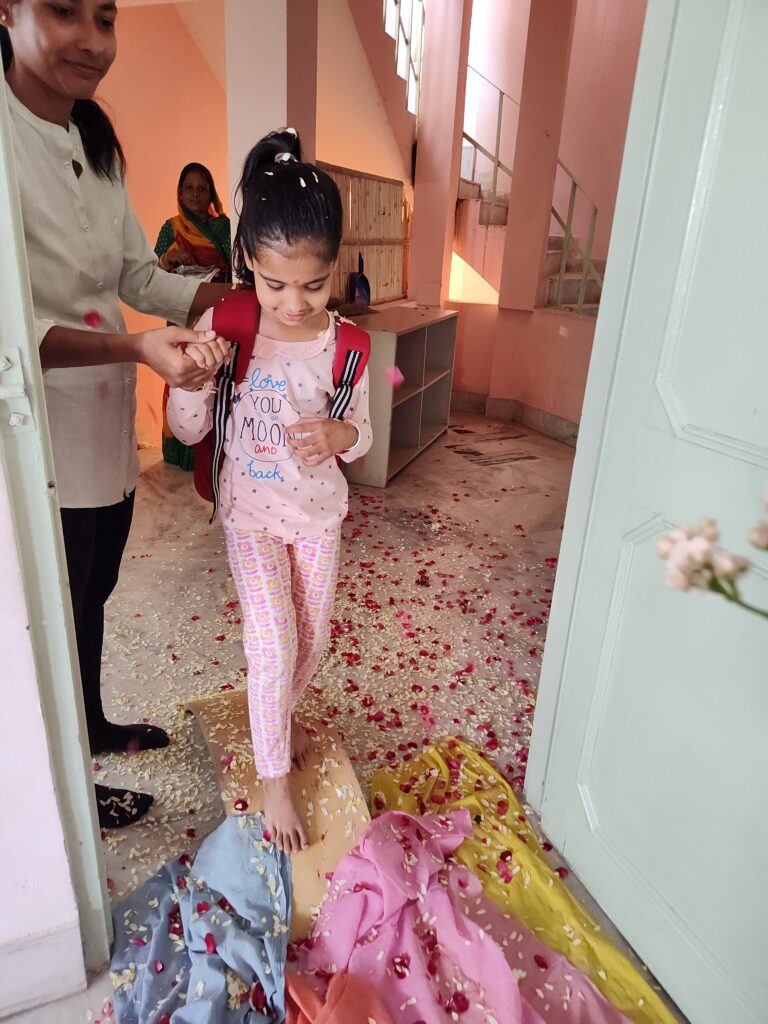
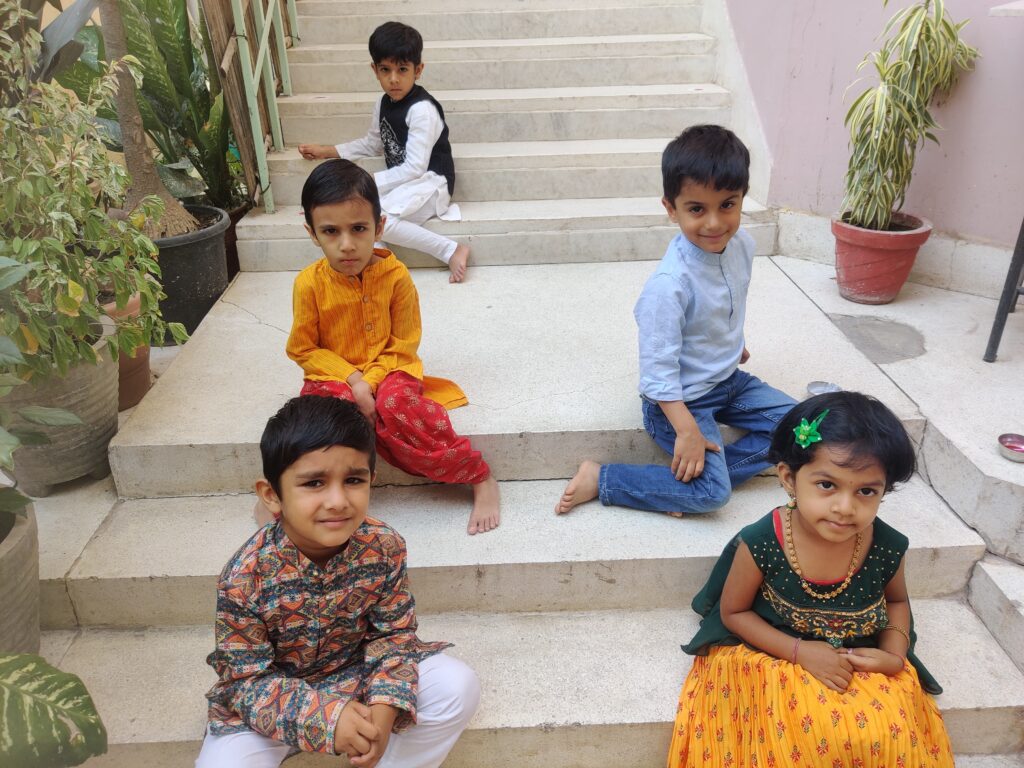
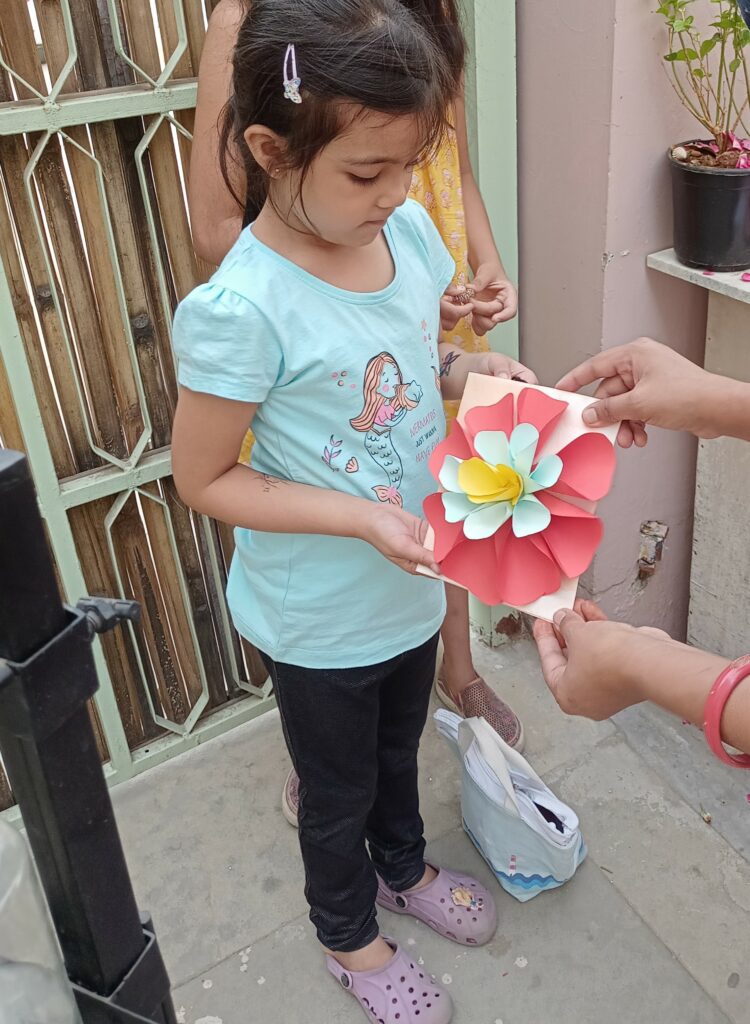
OUTDOOR PLAY
Children go out and play in the School playground which has a huge sand pit, lots of mud and trees everywhere. The playtime is completely unstructured and children are let to be and play out of their imaginative capacities many times creating their own games. It is very healing and does cosmic wonders to a child’s physical and socio-emotional development.

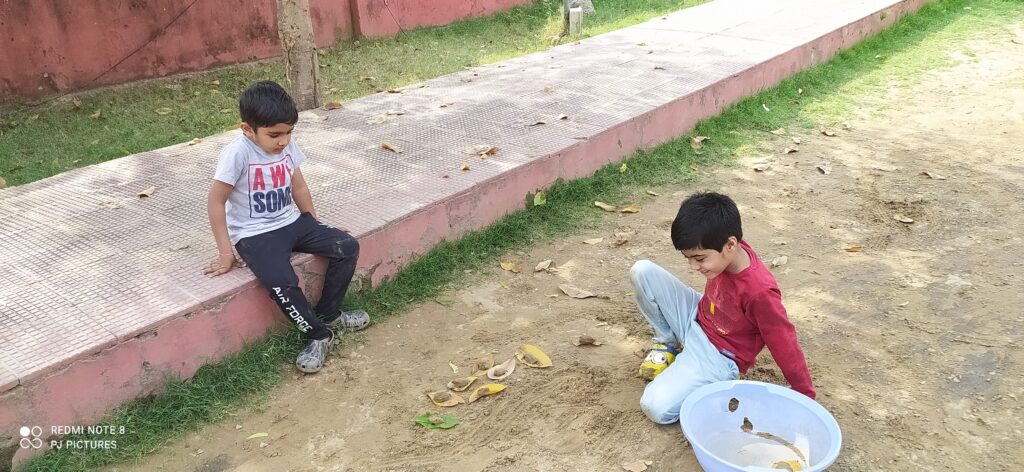
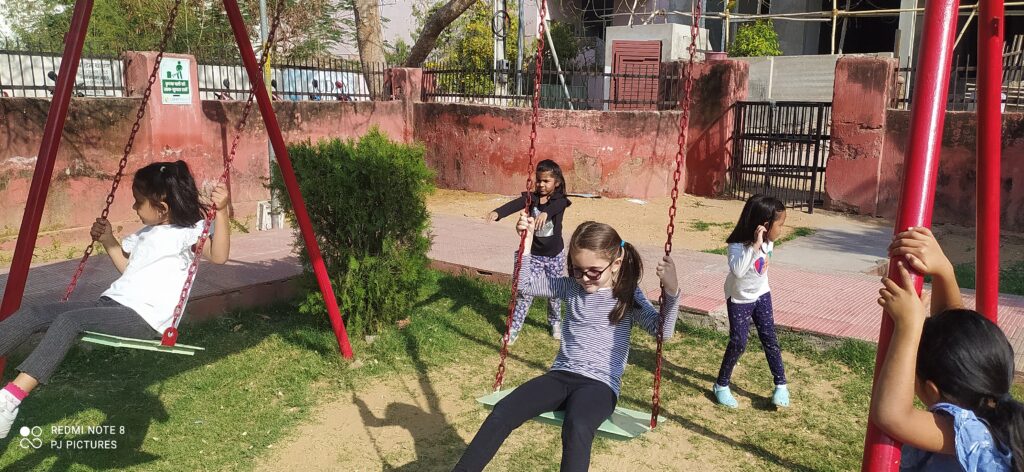
FRUIT TIME AND SNACK TIME
Each child brings a whole fruit to school. During Fruit time they all sit together and share those fruits freshly cut in the school kitchen. They enjoy eating a variety of fruits, everyday. The children help set the table with flowers, mugs, bowls, and food, and after thanking the earth, the sun and rain sit at the table to eat together. This way not only children inculcate healthy eating habits but they also develop the feeling of oneness and learning to share as well. We truly believe that children who have learned to revere trees since childhood would become individuals working to preserve our environment.
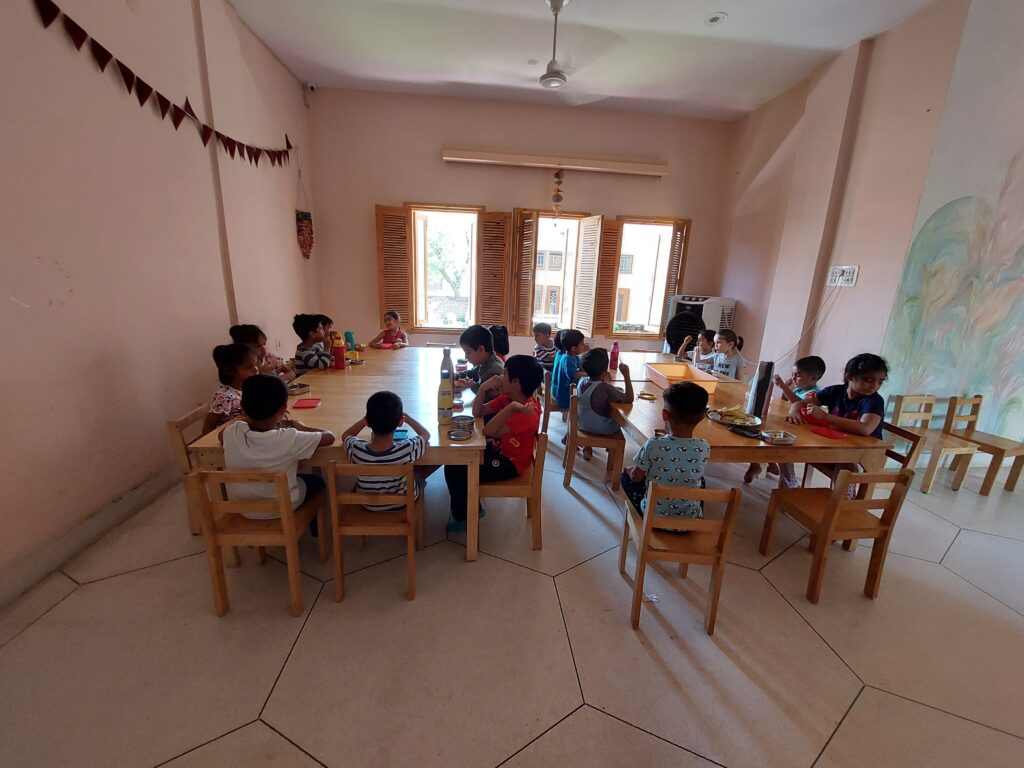
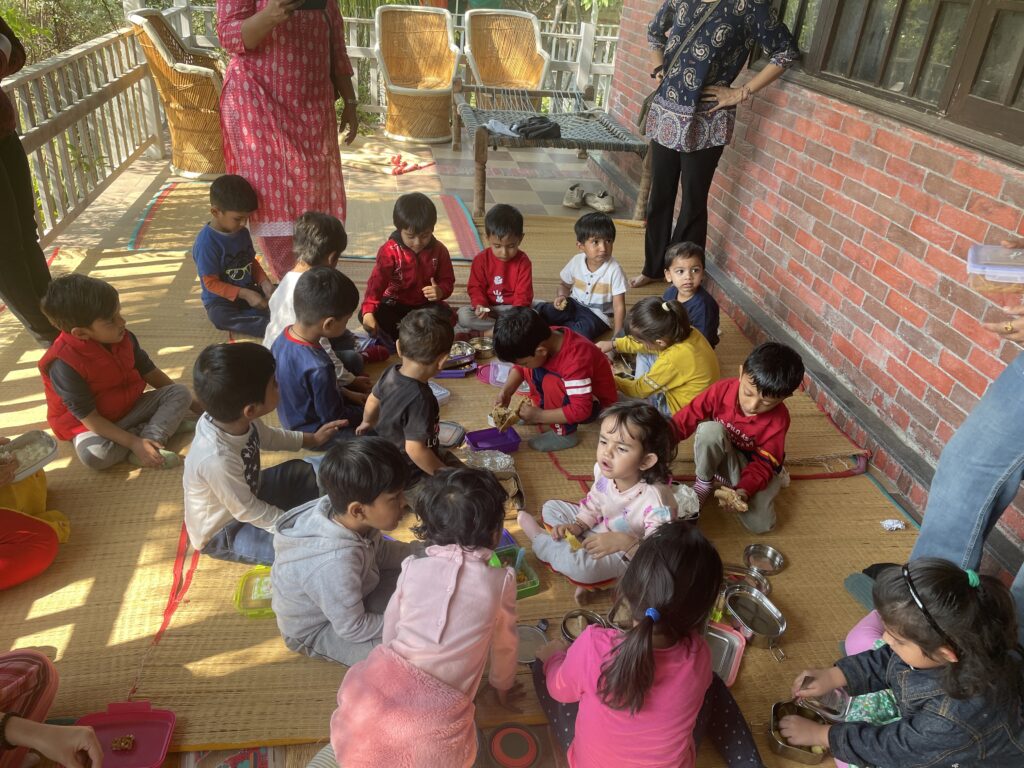
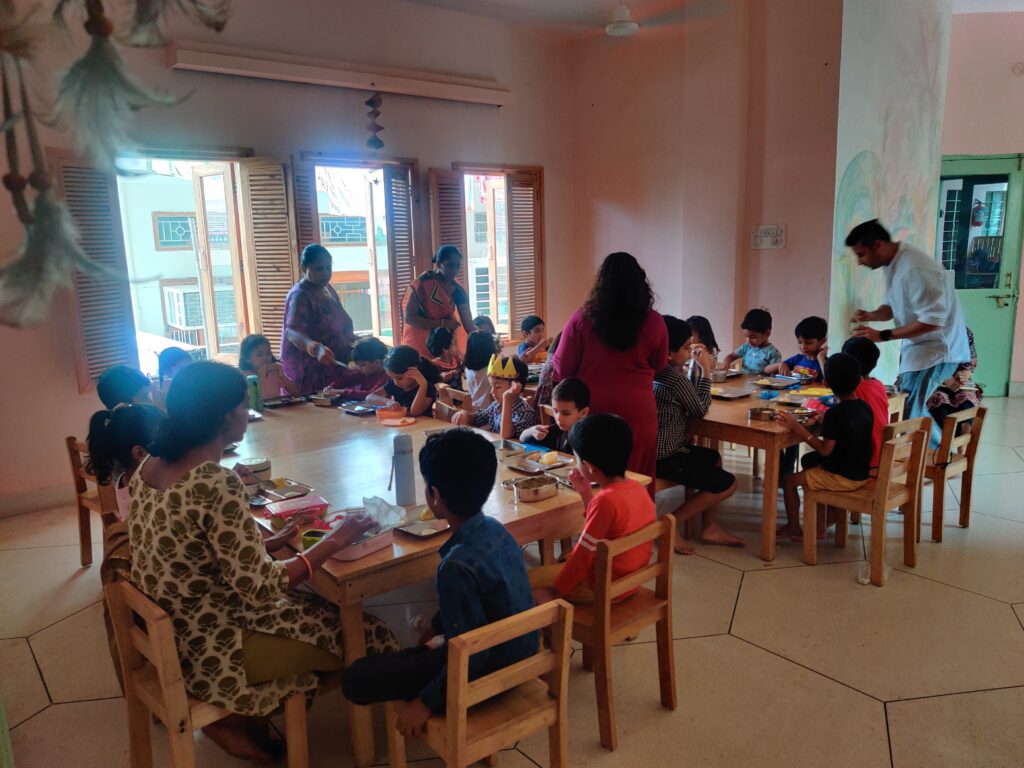
MORNING CIRCLE TIME
During Morning Circle, the children are in a circle together. They sing seasonal songs, play circle games and do finger rhymes. It’s all done as per the rhythm of the month and it helps them find music within. Doing it with gestures helps them move their bodies actively, works on their memory subtly, adds tons of new words in their vocabulary, improves speech & pronunciation. All these aspects prepare them for the academics in the coming years.
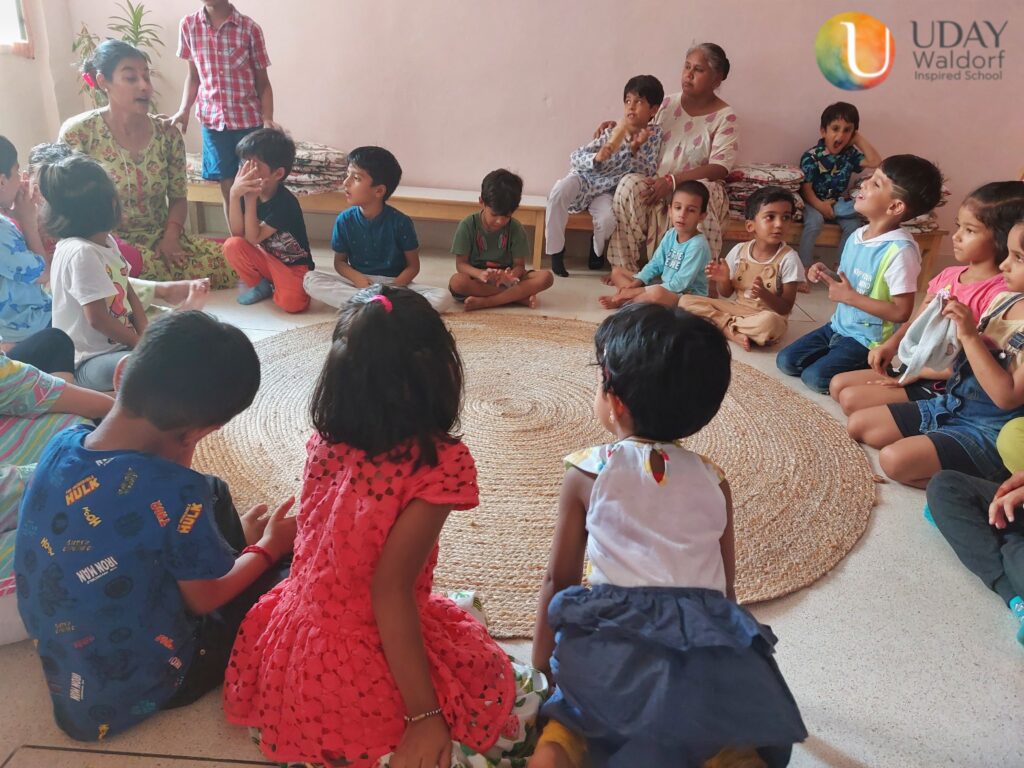
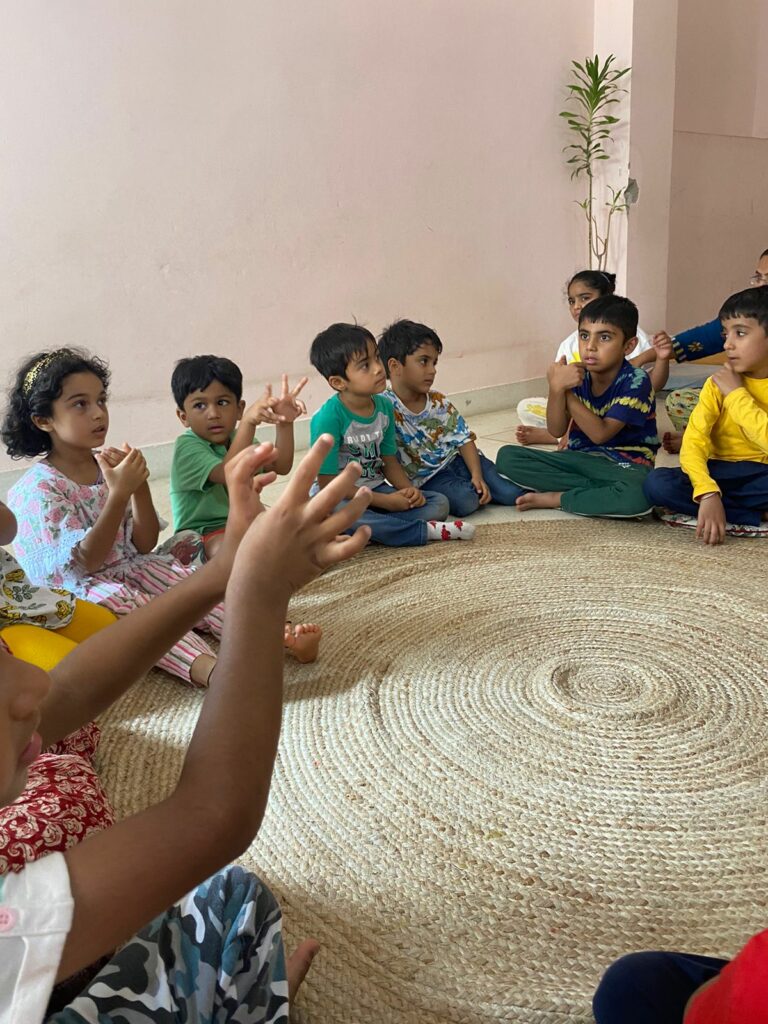
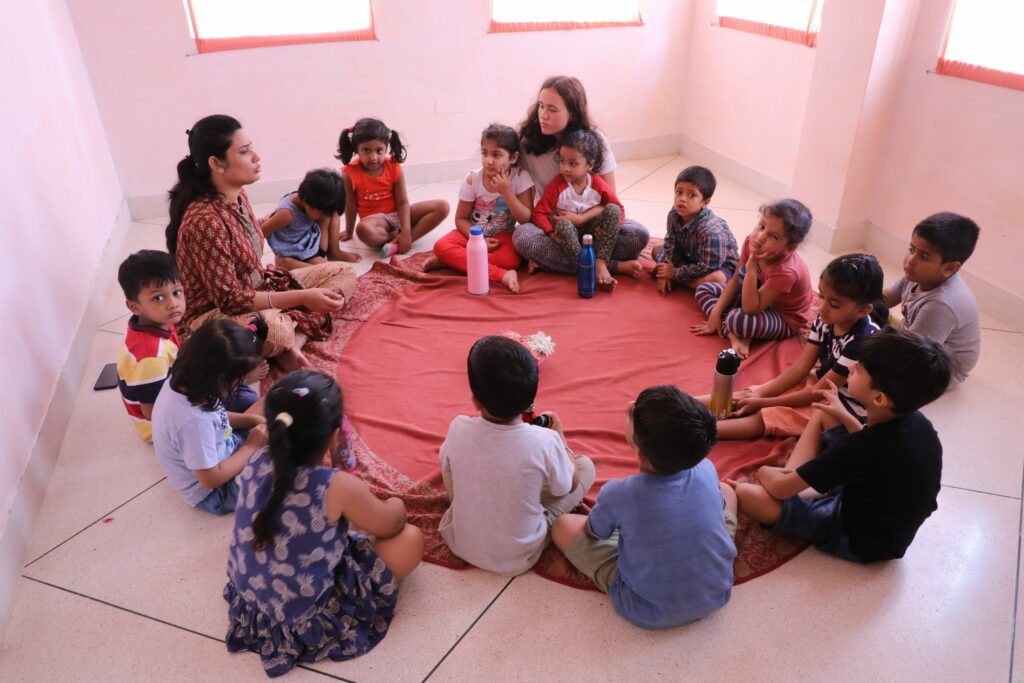
INDOOR PLAY
After closing with a warmly familiar rhyme we tiptoe to our indoor play. Play is the work of childhood. Indoor play is the play time inside the toy room, where there are handmade toys, dolls, non-connecting blocks, role play opportunities, kitchen set up, doll house, warmly and naturally done interiors which are calming and soothing. Children spend almost an hour playing inside and one can see all scenes of the outside world being depicted in the indoor play time. It’s a very healthy and natural opportunity for the children to express and digest what they have seen in their lives and understand it subconsciously. It’s their way of knowing themselves, developing socially, playing imaginatively, solving problems, learning to lead, expressing their ideas and becoming better communicators while learning from each other.
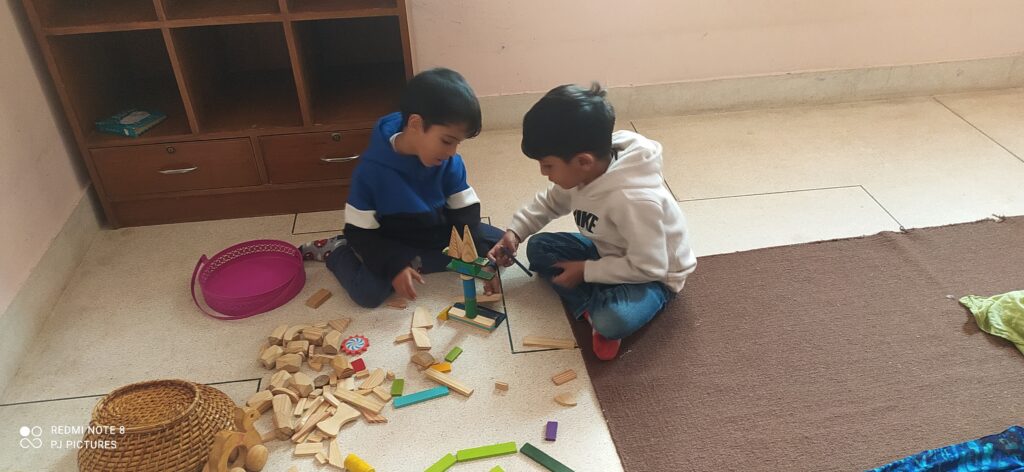
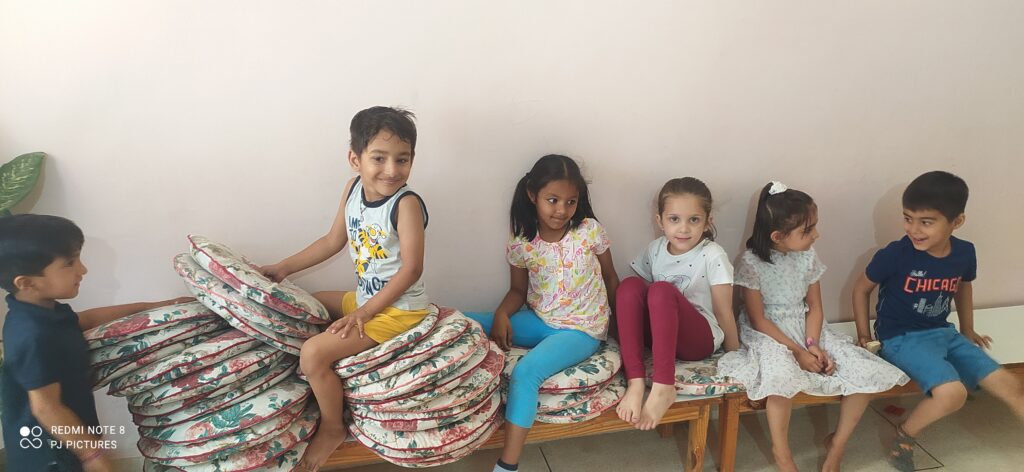
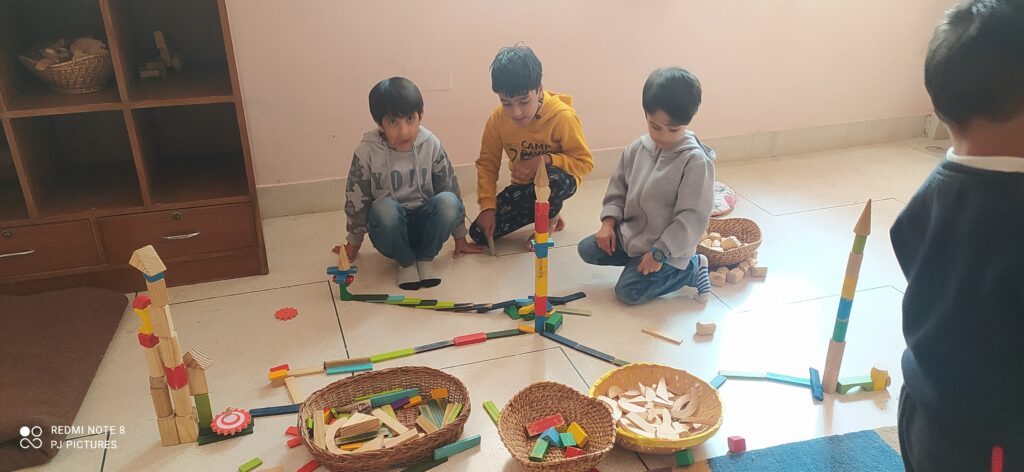
DAILY ACTIVITY
Each morning an enriching activity is offered – for example, cooking on Thursdays, painting on Fridays, drawings on Mondays, handwork on Tuesdays.
Cooking forms a major part of the curriculum, not only cooking is a very real activity where children can see how working with their own hands the raw materials can be transformed to something yummy, they also gain confidence in their own abilities . Cooking works on many senses at the same time (Touch, Taste, Smell, Vision, Will) and helps the child to learn to follow multiple sequential instructions while learning more about the food world and also develop sequential memory to be able to take multi step instructions later.
Drawing is an integral part of every week ,done religiously every Monday, drawing on a plain sheet of paper helps the child to better connect with himself and express himself through art. It enhances their observation capacities, fosters imagination and makes the child feel balanced and rested.
Friday is the painting day, they explore various kinds of art forms and mediums like thread painting, block painting, finger painting, painting on various nature objects, and printing them as well. The tie and dye art is also brought to their consciousness. Done most often is the Waldorf wet on wet painting with single colours where imbibing the colour quality, learning about each colour movement subconsciously, preparing the sheets, setting the table, learning to hold and use the brush gently, sitting patiently and quietly while doing it and learning to clean up post being done are all the hidden lessons behind each painting session. Painting is a very calming experience, one can see a sudden quietness in the mood after wet on wet paintings and each time a lot of eagerness of wanting to do it.
We say “Nimble fingers make nimble minds“. Through handwork, children develop fine motor skills and learn to use their fingers in a more flexible way. It also helps in activating the mind with creating and strengthening mental pathways. It nourishes the will of the child and creates an inner enthusiasm towards doing a purposeful activity. Builds confidence and self esteem. The more one works with the fingertips the better the connection within the left and right brain thereby helping in the proper development of the child. For the same reason, the kids perform different handwork activities like beading, lacing in certain patterns, making their own wooden block, shoe polish, moulding play dough, dream catches, mandala etc.
Throughout the year, the children are indulged in various kinds of seasonal crafts. Crafts help the child see the aesthetic beauty when they work through their hands on something. The creative aspect helps them bring out their imagination to make the object how they envision it.
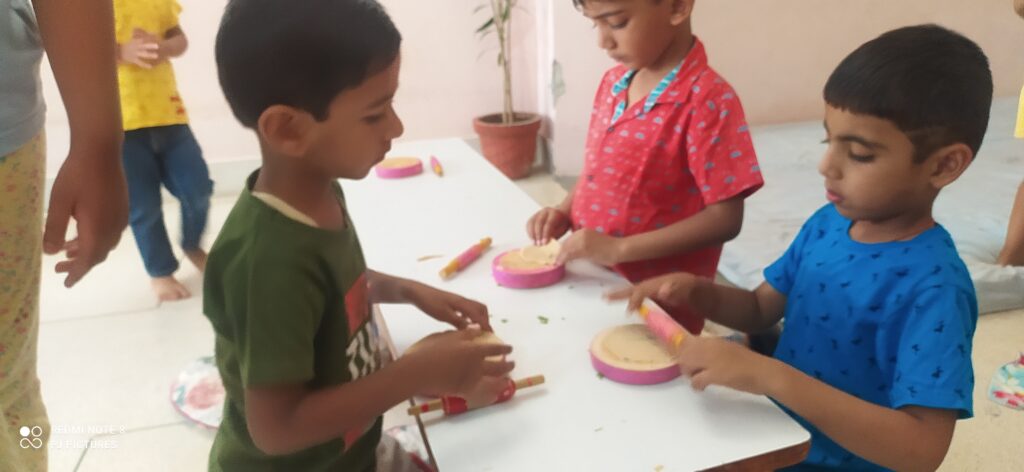
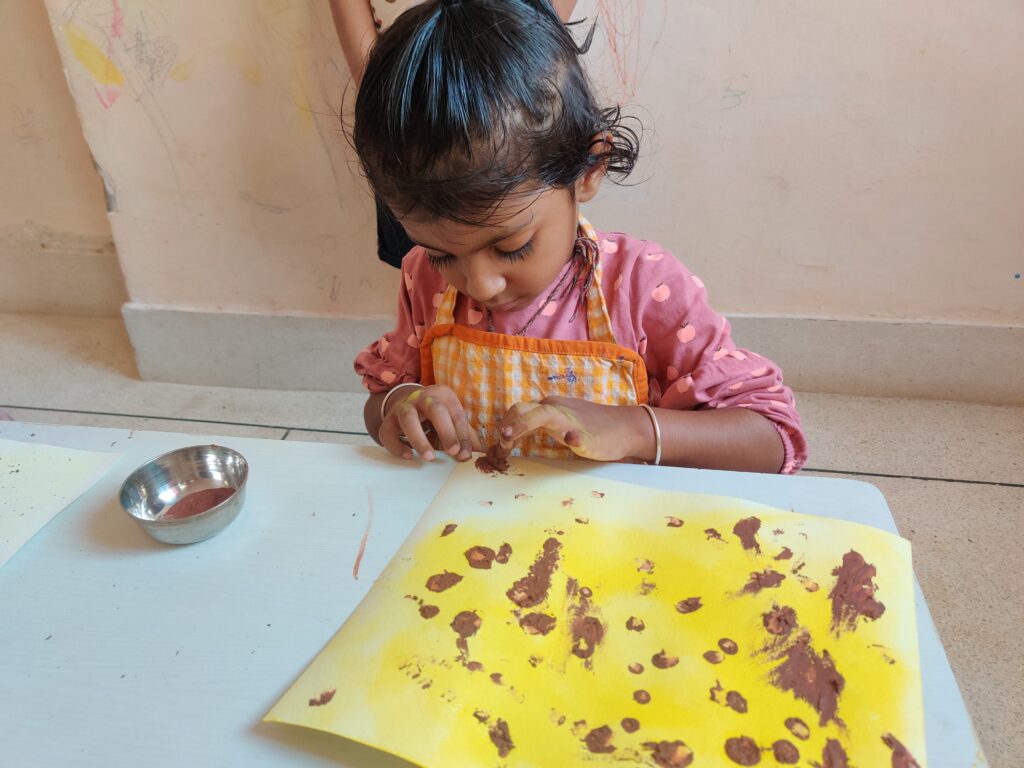
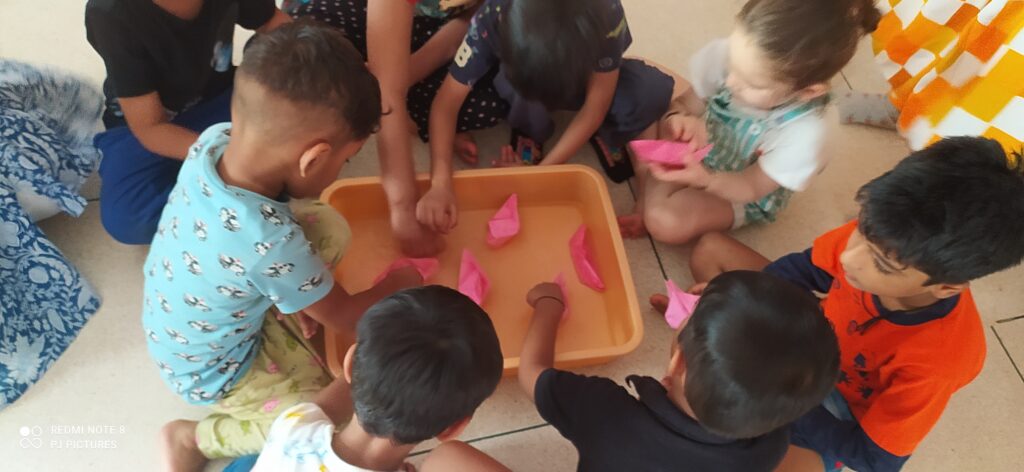
STORY TIME
After the play, the children gather for a story or puppet show. Story time is the most beautiful time of the day where children listen to a fairy story which is very carefully chosen by the teacher. The story is narrated in various languages and forms – Hindi, English, Narrative, Puppet, Lantern, enactment etc. In the process, the children’s language gets worked upon, imagination fostered and subconsciously they take the message from the story deep within. Many times stories are done for bringing specific lessons to children and healing some behaviours that need attention.
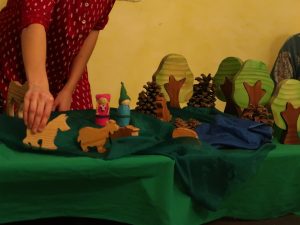
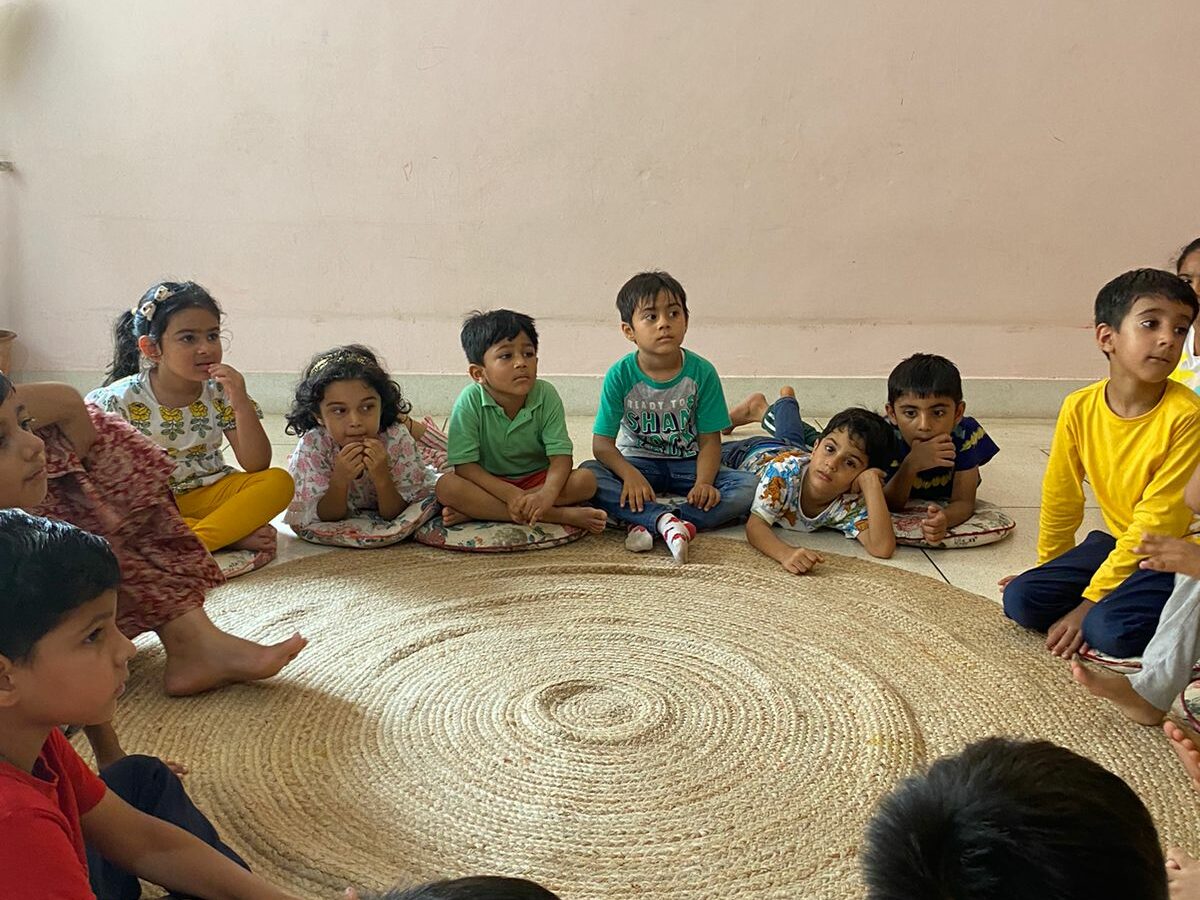
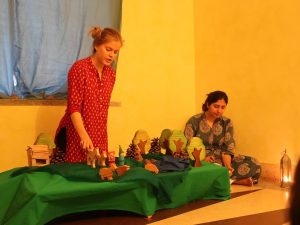
LUNCH TIME
It is enjoyed together by the children and their teachers.
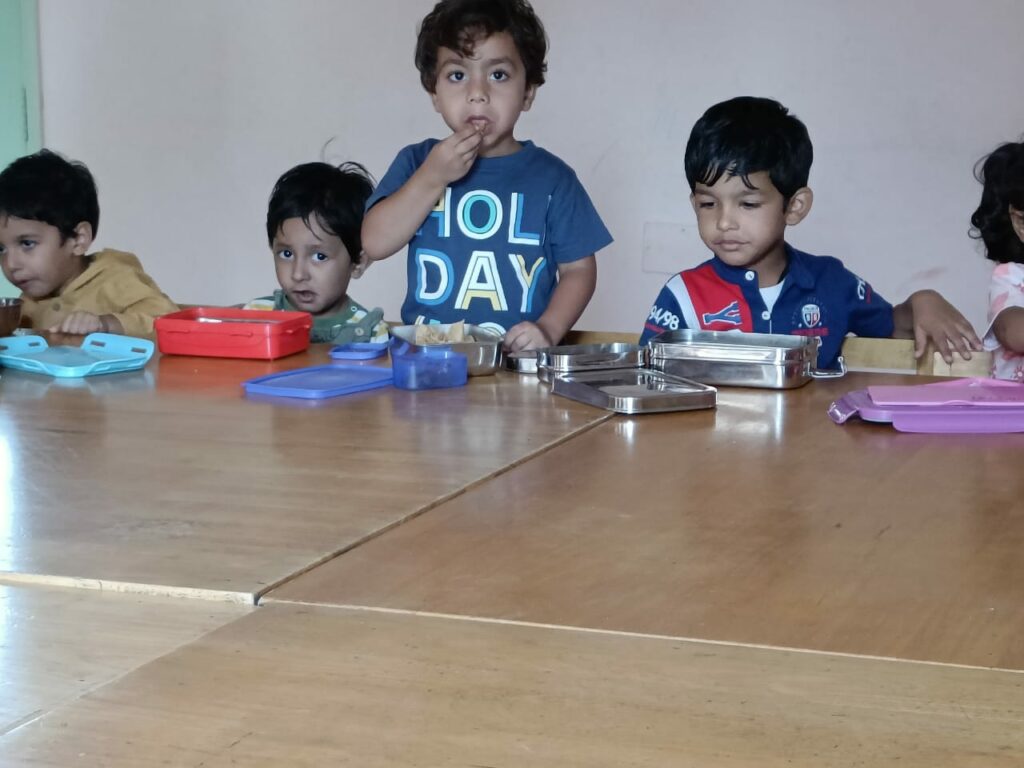
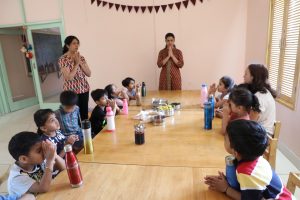
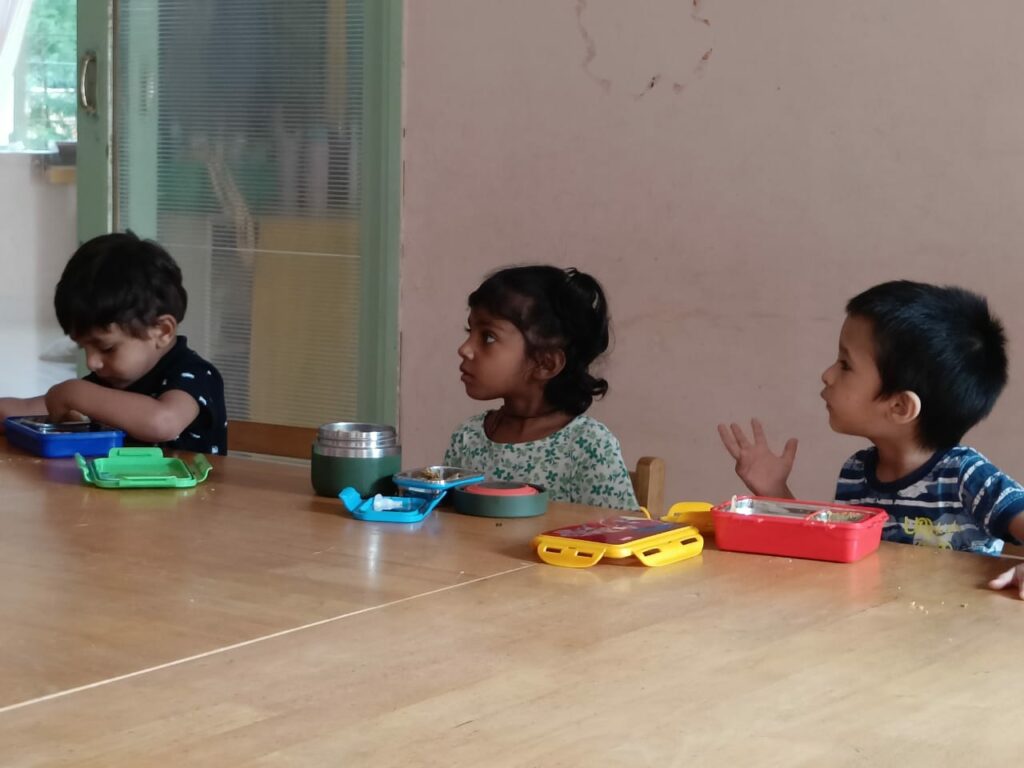
QUIET TIME
Quiet time and rest time is observed before the afternoon programme where more structured sessions are offered to older kindergarten children.
